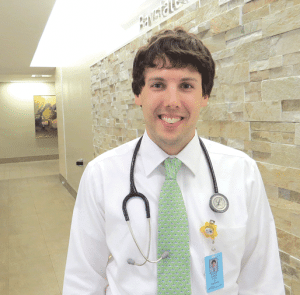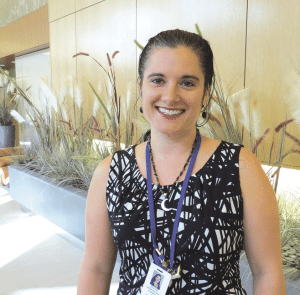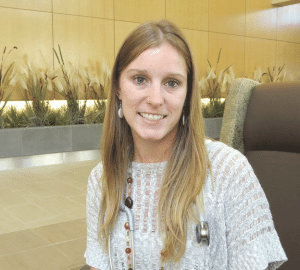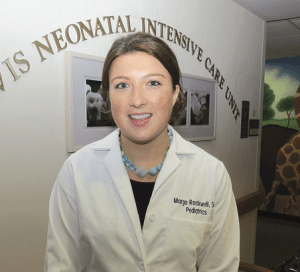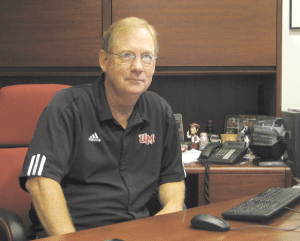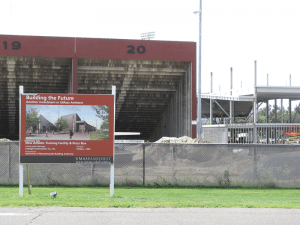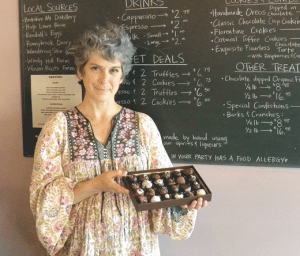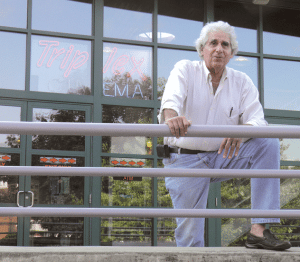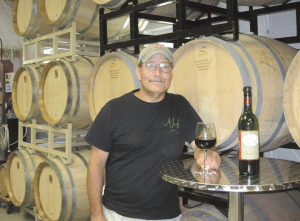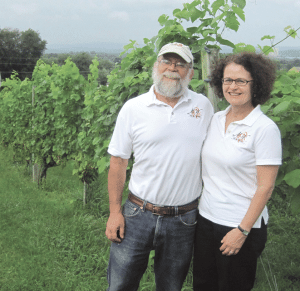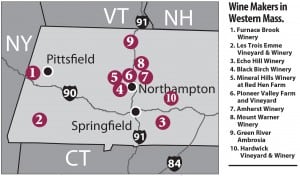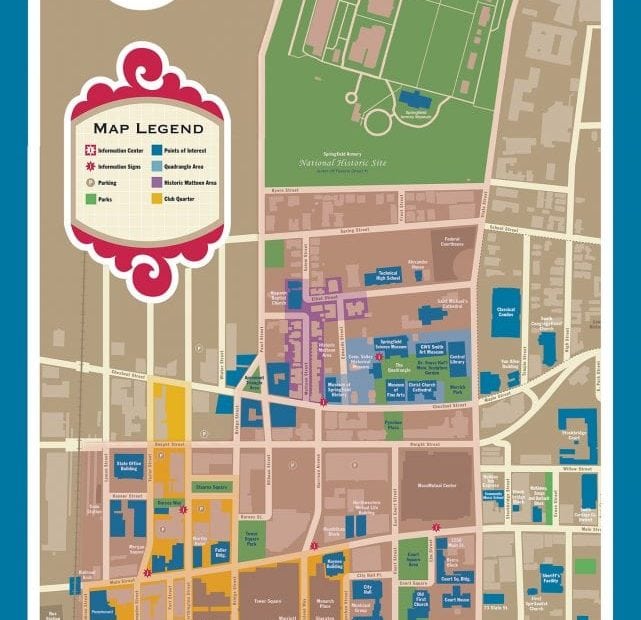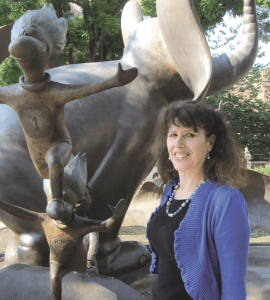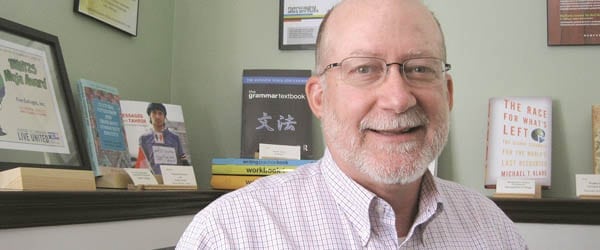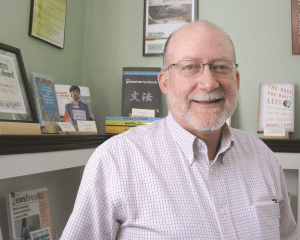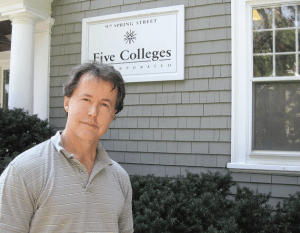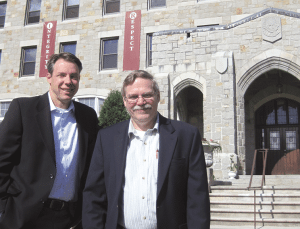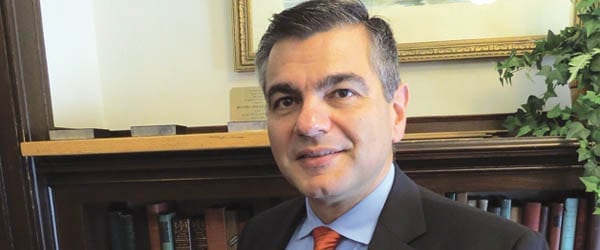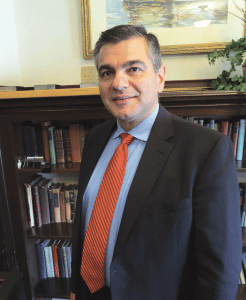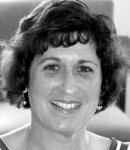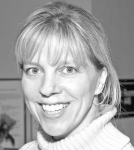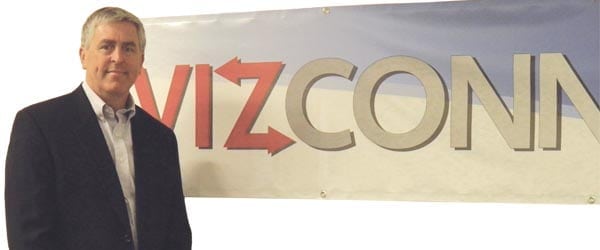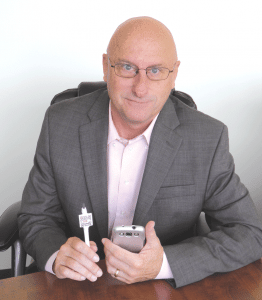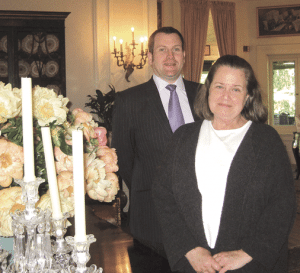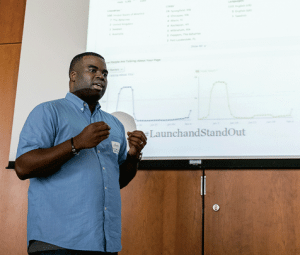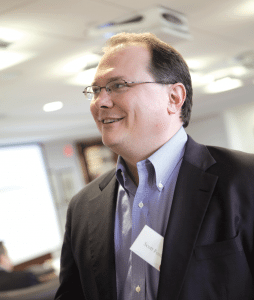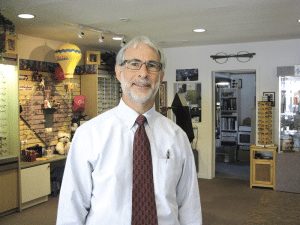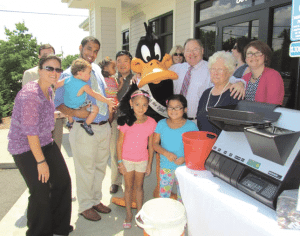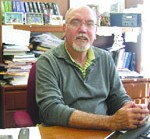The following real estate transactions (latest available) were compiled by Banker & Tradesman and are published as they were received. Only transactions exceeding $115,000 are listed. Buyer and seller fields contain only the first name listed on the deed.
FRANKLIN COUNTY
ASHFIELD
396 Buckland Road
Ashfield, MA 01330
Amount: $165,000
Buyer: Nelson Howes
Seller: Roger E. Howes
Date: 07/05/13
234 West Road
Ashfield, MA 01330
Amount: $215,000
Buyer: Carol A. O’Connell
Seller: Yvette Legall
Date: 07/03/13
BERNARDSTON
243 Bald Mountain Road
Bernardston, MA 01337
Amount: $277,000
Buyer: Matthew O. Trombley
Seller: Amy L. Slocum
Date: 07/10/13
DEERFIELD
14 Dickinson St.
Greenfield, MA 01301
Amount: $214,500
Buyer: George A. Lapenta
Seller: Ethan M. Wilkins
Date: 07/10/13
218 Greenfield Road
Deerfield, MA 01373
Amount: $467,500
Buyer: Gideon Porth
Seller: Francis G. Sobieski
Date: 07/02/13
16 Jones Road
Deerfield, MA 01342
Amount: $400,000
Buyer: Brian J. Carney
Seller: Eugene A. Rice
Date: 07/01/13
24 Kelleher Dr.
Deerfield, MA 01373
Amount: $252,000
Buyer: Hollianne B. Rappe
Seller: Edward W. Pepyne
Date: 07/03/13
35 Meadow Lane
Greenfield, MA 01301
Amount: $302,500
Buyer: Susan N. Lemeshow
Seller: James C. Pelletier
Date: 07/12/13
GREENFIELD
14 Carol Lane
Greenfield, MA 01301
Amount: $202,000
Buyer: Justin M. Allenby
Seller: William R. Perry
Date: 07/02/13
235 Federal St.
Greenfield, MA 01301
Amount: $425,000
Buyer: Florence Saving Bank
Seller: Kyprea LLC
Date: 07/01/13
3 Park St.
Greenfield, MA 01301
Amount: $175,750
Buyer: Bank New York Mellon
Seller: Wayne P. Kellogg
Date: 07/01/13
134 Wells St.
Greenfield, MA 01301
Amount: $160,000
Buyer: MHFA
Seller: Christen M. Wilcox
Date: 07/05/13
33 Woodleigh Ave.
Greenfield, MA 01301
Amount: $188,000
Buyer: Francis J. Twarog
Seller: Armando A. Bresciano
Date: 07/03/13
LEVERETT
32 Laurel Hill Dr.
Leverett, MA 01054
Amount: $500,000
Buyer: Leonard Strauss
Seller: Peter Longiaru
Date: 07/11/13
MONTAGUE
3 H St.
Montague, MA 01376
Amount: $173,000
Buyer: Andrew S. Toomajian
Seller: Christipher J. Pletcher
Date: 07/09/13
39 Oakman St.
Montague, MA 01376
Amount: $143,500
Buyer: Debra Beck
Seller: Mark D. Letourneau
Date: 07/12/13
NEW SALEM
357 Petersham Road
New Salem, MA 01355
Amount: $140,000
Buyer: Edward A. Mallett
Seller: Michael A. Lombard
Date: 07/01/13
NORTHFIELD
68 Pierson Road
Northfield, MA 01360
Amount: $116,667
Buyer: Mark K. Trumbull
Seller: Trumbull, John C., (Estate)
Date: 07/01/13
ORANGE
110 Drew Blvd.
Orange, MA 01364
Amount: $115,000
Buyer: Asam Stacey
Seller: South Middlesex Non Prof. Housing
Date: 07/12/13
125 Drew Blvd.
Orange, MA 01364
Amount: $127,000
Buyer: Eva Raynolds
Date: 07/12/13
20 Shingle Brook Road
Orange, MA 01364
Amount: $130,500
Buyer: Jason S. Rushford
Seller: Lesley J. Henley
Date: 07/01/13
245 Tully Road
Orange, MA 01364
Amount: $250,000
Buyer: David F. Bardsley
Seller: Stephen G. Thompson
Date: 07/01/13
98 Warwick Road
Orange, MA 01364
Amount: $147,500
Buyer: Aaron J. Stafford
Seller: Joanna L. Fisher
Date: 07/10/13
SUNDERLAND
31 Howard Hepburn Dr.
Sunderland, MA 01375
Amount: $300,000
Buyer: Robert E. Sabola
Seller: Frank R. Judice
Date: 07/09/13
122 Old Amherst Road
Sunderland, MA 01375
Amount: $126,900
Buyer: Valley Building Co. Inc.
Seller: Beneficial MA Inc.
Date: 07/12/13
40 Reservation Road
Sunderland, MA 01375
Amount: $270,000
Buyer: Ilana L. Schmitt
Seller: Michael L. Cendrowski
Date: 07/05/13
WENDELL
55 Morse Village Road
Wendell, MA 01379
Amount: $120,000
Buyer: Penny A. Fernet
Seller: Virginia E. Schimmel
Date: 07/08/13
WHATELY
21 State Road
Whately, MA 01093
Amount: $235,000
Buyer: Evelyn Lorenzi-Quinones
Seller: April Realty Investments
Date: 07/02/13
HAMPDEN COUNTY
AGAWAM
600 Cooper St.
Agawam, MA 01001
Amount: $139,500
Buyer: Sergey Bratnichenko
Seller: Samuel J. Misischia
Date: 07/08/13
34 Corey St.
Agawam, MA 01001
Amount: $220,000
Buyer: Meaghen J. Serra
Seller: Raymond J. Gobeille
Date: 07/12/13
15 Farmington Circle
Agawam, MA 01001
Amount: $609,500
Buyer: Stephen B. Pudles
Seller: Hillside Dev. Corp.
Date: 07/12/13
130 Walnut St.
Agawam, MA 01001
Amount: $247,800
Buyer: DJJ Investments LLC
Seller: Alexander Sokolson
Date: 07/12/13
232 Walnut St.
Agawam, MA 01001
Amount: $155,241
Buyer: US Bank NA
Seller: Lisa Pepper
Date: 07/10/13
60 Willow Brook Dr.
Agawam, MA 01001
Amount: $261,000
Buyer: Rohit Patel
Seller: Roda, Debra Ann, (Estate)
Date: 07/01/13
BRIMFIELD
61 John Haley Road
Brimfield, MA 01010
Amount: $300,000
Buyer: Brian E. Bigos
Seller: Marc N. Riel
Date: 07/01/13
351 Sturbridge Road
Brimfield, MA 01010
Amount: $250,299
Buyer: Ralph W. Nichols
Seller: Deutsche Bank National
Date: 07/03/13
CHICOPEE
1 Better Way
Chicopee, MA 01022
Amount: $8,391,700
Buyer: Avery Products Corp.
Seller: Avery Dennison Office
Date: 07/12/13
8 Bonneta Circle
Chicopee, MA 01020
Amount: $142,000
Buyer: Kenneth Schreiber
Seller: Mainville, Bertha, (Estate)
Date: 07/12/13
259 Britton St.
Chicopee, MA 01020
Amount: $130,000
Buyer: Dale J. Thouin
Seller: Gregoire, Joseph F., (Estate)
Date: 07/08/13
67 Cochran St.
Chicopee, MA 01020
Amount: $267,000
Buyer: James M. Niedbala
Seller: Gary S. Toth
Date: 07/08/13
34 Como Dr.
Chicopee, MA 01020
Amount: $228,500
Buyer: Diana M. Lorenzo
Seller: Steven M. Page
Date: 07/10/13
72 Florence St.
Chicopee, MA 01013
Amount: $134,100
Buyer: Gary M. Bisiniere
Seller: Marie F. Lonczak
Date: 07/12/13
171 Grattan St.
Chicopee, MA 01020
Amount: $227,000
Buyer: Nelson Goncalves
Seller: Helder Carvalho
Date: 07/01/13
19 Hillman St.
Chicopee, MA 01020
Amount: $165,000
Buyer: Audrey Foster
Seller: Gerald R. Slota
Date: 07/12/13
527 McKinstry Ave.
Chicopee, MA 01020
Amount: $185,500
Buyer: Christina Turner
Seller: Russell Nubile
Date: 07/09/13
32 Morris St.
Chicopee, MA 01020
Amount: $125,000
Buyer: MHFA
Seller: Oleg Moskvich
Date: 07/03/13
44 Schley St.
Chicopee, MA 01020
Amount: $152,000
Buyer: Luis Diaz
Seller: David J. Klofas
Date: 07/09/13
EAST LONGMEADOW
162 Braeburn Road
East Longmeadow, MA 01028
Amount: $195,000
Buyer: Brianna Perry
Seller: Luis F. Gutierrez
Date: 07/08/13
3 Canterbury Circle
East Longmeadow, MA 01028
Amount: $373,800
Buyer: Michael D. Deflorio
Seller: Todd Z. Hayden
Date: 07/03/13
119 Dearborn St.
East Longmeadow, MA 01028
Amount: $215,500
Buyer: Tabitha L. Mirsola
Seller: Jodi L. Terrell
Date: 07/01/13
40 Glendale Road
East Longmeadow, MA 01028
Amount: $195,000
Buyer: Timothy R. Manning
Seller: Paul F. Manship
Date: 07/12/13
181 Hampden Road
East Longmeadow, MA 01028
Amount: $131,500
Buyer: Matthew C. Trinceri
Seller: Leone, Joseph R., (Estate)
Date: 07/09/13
406 North Main St.
East Longmeadow, MA 01028
Amount: $861,400
Buyer: Pecousic Mabrook LLC
Seller: Heritage Park
Date: 07/01/13
166 Porter Road
East Longmeadow, MA 01028
Amount: $287,500
Buyer: Joseph B. Hutchison
Seller: Edward A. Clark
Date: 07/03/13
95 Ridge Road
East Longmeadow, MA 01028
Amount: $314,000
Buyer: William R. Dennis
Seller: Charles H. Gray
Date: 07/08/13
10 Shelby Lane
East Longmeadow, MA 01028
Amount: $320,000
Buyer: Wendy E. Osbourne
Seller: Winston E. Moore
Date: 07/02/13
29 Thompkins Ave.
East Longmeadow, MA 01028
Amount: $263,000
Buyer: Harold House
Seller: Jessica E. Martin
Date: 07/08/13
118 Thompkins Ave.
East Longmeadow, MA 01028
Amount: $153,900
Buyer: Matthew L. Weiss
Seller: Andrew J. Porcello
Date: 07/02/13
HAMPDEN
152 Allen St.
Hampden, MA 01036
Amount: $126,597
Buyer: Laurels RT
Seller: USA HUD
Date: 07/09/13
112 North Road
Hampden, MA 01036
Amount: $125,000
Buyer: Melissa L. McCarthy
Seller: Historical Society Of Hampden
Date: 07/10/13
HOLLAND
2 Bennett Lane
Holland, MA 01521
Amount: $245,000
Buyer: Eric J. Roppolo
Seller: Nicholas C. Kahl
Date: 07/02/13
54 Union Road
Holland, MA 01521
Amount: $145,000
Buyer: John W. Buckley
Seller: Elvis W. Dyer
Date: 07/09/13
HOLYOKE
49 Claremont Ave.
Holyoke, MA 01040
Amount: $159,900
Buyer: Sebastian R. Labonte
Seller: Frank B. Munson
Date: 07/01/13
25 Clinton Ave.
Holyoke, MA 01040
Amount: $151,000
Buyer: Jorge R. Albelo
Seller: Israel Lebron
Date: 07/02/13
75 Congress Ave.
Holyoke, MA 01040
Amount: $162,000
Buyer: Cladi Rodriguez
Seller: Kristina M. Acevedo
Date: 07/02/13
1086 Main St.
Holyoke, MA 01040
Amount: $121,000
Buyer: Shaylyn Fitzell
Seller: Joyce E. Johnson
Date: 07/03/13
1705 Northampton St.
Holyoke, MA 01040
Amount: $217,000
Buyer: 1707 RT
Seller: Matthew L. Donohue
Date: 07/09/13
95 Pearl St.
Holyoke, MA 01040
Buyer: Anne A. Pinkerton
Seller: Mary J. Curtis
Date: 07/01/13
62 Saint James Ave.
Holyoke, MA 01040
Amount: $122,778
Buyer: Midfirst Bank State
Seller: Wendy Ortiz
Date: 07/11/13
LONGMEADOW
281 Converse St.
Longmeadow, MA 01106
Amount: $374,000
Buyer: Anne T. Cavallo
Seller: Gregory Merchant
Date: 07/12/13
6 Farmington Ave.
Longmeadow, MA 01106
Amount: $430,500
Buyer: Matthew E. Galuska
Seller: Michael J. Greiner
Date: 07/01/13
25 Highland St.
Longmeadow, MA 01106
Amount: $325,000
Buyer: Alfonso D. Via
Seller: Daniel M. Bannish
Date: 07/10/13
70 Hopkins Place
Longmeadow, MA 01106
Amount: $255,000
Buyer: Vincent J. Martucci
Seller: Cheryl Mustain
Date: 07/01/13
44 Lincoln Park
Longmeadow, MA 01106
Amount: $181,500
Buyer: Nicholas J. Criscitelli
Seller: Brian E. Leverock
Date: 07/08/13
111 Meadowbrook Road
Longmeadow, MA 01106
Amount: $469,500
Buyer: Gregory M. Merchant
Seller: Adele Miller
Date: 07/12/13
389 Porter Road
Longmeadow, MA 01028
Amount: $205,000
Buyer: Wesley Berrios
Seller: Edward O. Fisk
Date: 07/08/13
12 Primrose Dr.
Longmeadow, MA 01106
Amount: $326,500
Buyer: Owen J. Moriarty
Seller: Grace S. Spingler
Date: 07/10/13
LUDLOW
40 Alfred St.
Ludlow, MA 01056
Amount: $160,000
Buyer: Patti L. Niedzialek
Seller: Timothy J. Boulrice
Date: 07/12/13
13 Berkshire St.
Ludlow, MA 01056
Amount: $157,500
Buyer: Ricardo Varandas
Seller: Christine M. Calheno
Date: 07/02/13
16 Carol St.
Ludlow, MA 01056
Amount: $122,000
Buyer: Brandi G. Hing
Seller: Helder D. Santos
Date: 07/03/13
45 Duke St.
Ludlow, MA 01056
Amount: $118,000
Buyer: Rachel L. Correia
Seller: Antonio Dias
Date: 07/08/13
58 Duke St.
Ludlow, MA 01056
Amount: $115,000
Buyer: Michael J. Kelley
Seller: Dawn M. Fortin
Date: 07/02/13
Olivia Circle
Ludlow, MA 01056
Amount: $130,000
Buyer: Derek Rodrigues
Seller: Rosewood Meadows Inc.
Date: 07/11/13
140 Posner Circle
Ludlow, MA 01056
Amount: $172,000
Buyer: Joshua M. Grandfield
Seller: Kevin J. Pearson
Date: 07/03/13
MONSON
492 Boston Road West
Monson, MA 01069
Amount: $120,000
Buyer: Michael E. Pelland
Seller: Keith E. Bourbonnais
Date: 07/11/13
20 High St.
Monson, MA 01057
Amount: $219,900
Buyer: Pamela M. Wentworth
Seller: Rebecca J. Provost
Date: 07/10/13
14 Maxwell Road
Monson, MA 01057
Amount: $241,000
Buyer: Kellie J. Miller
Seller: Leslie B. Halpern
Date: 07/03/13
PALMER
176 Boston Road
Palmer, MA 01069
Amount: $325,000
Buyer: Michael Laventure
Seller: Douglas L. Turley
Date: 07/01/13
34 Grove St.
Palmer, MA 01069
Amount: $152,222
Buyer: Midfirst Bank State
Seller: Paul D. Clark
Date: 07/03/13
2020 Pine St.
Palmer, MA 01080
Amount: $128,500
Buyer: Laura C. Courchesne
Seller: Mary A. Sainato
Date: 07/01/13
33 Ruggles St.
Palmer, MA 01080
Amount: $147,000
Buyer: 33-35 Ruggles Street RT
Seller: NSP Residential LLC
Date: 07/12/13
123 State St.
Palmer, MA 01069
Amount: $179,000
Buyer: Joshua P. Labarre
Seller: Janice L. Chmura
Date: 07/10/13
RUSSELL
81 River St.
Russell, MA 01071
Amount: $125,000
Buyer: Heather Washington
Seller: Robert N. Tingley
Date: 07/01/13
SPRINGFIELD
14 Amanda St.
Springfield, MA 01118
Amount: $142,000
Buyer: Sanh C. Tu
Seller: Nextgen Inv. Group LLC
Date: 07/12/13
62 Bartels St.
Springfield, MA 01128
Amount: $165,000
Buyer: William V. Plourde
Seller: Cassanelli, Frieda S., (Estate)
Date: 07/08/13
18 Bellevue Ave.
Springfield, MA 01108
Amount: $164,000
Buyer: Michel Campbell-Langford
Seller: Claudette C. Smart
Date: 07/09/13
227 Berkshire Ave.
Springfield, MA 01109
Amount: $410,000
Buyer: Stavros Center For Independent Living
Seller: Thibodeau Realty LLC
Date: 07/05/13
118 Catalpa Terrace
Springfield, MA 01119
Amount: $159,500
Buyer: Maria S. Mendez-Marchese
Seller: Kelly S. Eich
Date: 07/09/13
30 Corona St.
Springfield, MA 01104
Amount: $138,256
Buyer: Beneficial MA Inc.
Seller: Jose A. Medina
Date: 07/02/13
24 Daviston St.
Springfield, MA 01108
Amount: $127,800
Buyer: Braeden J. Dion
Seller: Utako Dwyer
Date: 07/12/13
28 East Allen Ridge Road
Springfield, MA 01118
Amount: $144,500
Buyer: Freddie Ladson
Seller: CDM Props. LLC
Date: 07/08/13
54 Edgewood St.
Springfield, MA 01109
Amount: $125,000
Buyer: Stacy E. Forrette
Seller: Ali Real Estate Inv. LLC
Date: 07/09/13
177 Ferncliff Ave.
Springfield, MA 01119
Amount: $175,000
Buyer: Multi Cultural Community Services
Seller: Martin J. Ochtabec
Date: 07/02/13
137 Gillette Ave.
Springfield, MA 01118
Amount: $163,900
Buyer: Anouson Souvannasane
Seller: Michael Jonnes
Date: 07/01/13
87 Fountain St.
Springfield, MA 01108
Amount: $143,000
Buyer: Miguel A. Velez
Seller: Regina L. Wong
Date: 07/11/13
63 Garvey Dr.
Springfield, MA 01109
Amount: $168,500
Buyer: Daniel L. Ford
Seller: Wayne R. Everett
Date: 07/08/13
14 Hartwick St.
Springfield, MA 01108
Amount: $125,000
Buyer: Stephen Gasco
Seller: James B. Mellitt
Date: 07/12/13
56 Kenyon St.
Springfield, MA 01109
Amount: $123,500
Buyer: Diane B. Davidson
Seller: Ada E. Torres
Date: 07/03/13
630 Main St.
Springfield, MA 01105
Amount: $850,000
Buyer: F. L. Roberts & Co. Inc.
Seller: 630 Main Street LLP
Date: 07/10/13
17 Old Brook Road
Springfield, MA 01118
Amount: $128,500
Buyer: Clara Y. Moyet-Gonzalez
Seller: Madeline E. Midghall
Date: 07/09/13
281 Parker St.
Springfield, MA 01151
Amount: $280,000
Buyer: Unifirst Corp.
Seller: City Of Springfield
Date: 07/12/13
134 S. Shore Dr.
Springfield, MA 01118
Amount: $176,000
Buyer: Brian J. Ward
Seller: Diana C. Shatzer
Date: 07/12/13
15 Signal Hill Circle
Springfield, MA 01118
Amount: $170,000
Buyer: Pasquale Darco RET
Seller: Campagnari Construction LLC
Date: 07/09/13
222 Spikenard Circle
Springfield, MA 01129
Amount: $152,500
Buyer: Jeremiah A. Begley
Seller: Ana I. Gomez
Date: 07/08/13
136 Webber St.
Springfield, MA 01108
Amount: $144,900
Buyer: Briana M. O’Malley
Seller: Anthony Carnevale
Date: 07/08/13
1412 Wilbraham Road
Springfield, MA 01119
Amount: $128,900
Buyer: Marsha M. Ivey
Seller: Courtney E. Boron
Date: 07/11/13
SOUTHWICK
3 Beach Road
Southwick, MA 01077
Amount: $117,900
Buyer: Edward A. Nitsch
Seller: Loriane Sylvain
Date: 07/09/13
30 Berkshire Ave.
Southwick, MA 01077
Amount: $127,000
Buyer: Alan J. Selden
Seller: Dorothea E. Neuwirth
Date: 07/10/13
79 Bungalow St.
Southwick, MA 01077
Amount: $165,000
Buyer: John A. Gentile
Seller: Ronald Vandervliet
Date: 07/10/13
96 South Longyard Road
Southwick, MA 01077
Amount: $259,900
Buyer: Laura A. White
Seller: Albert L. Deloreto
Date: 07/01/13
WALES
77 Mount Hitchcock Road
Wales, MA 01081
Amount: $317,252
Buyer: FNMA
Seller: Justin K. Roussey
Date: 07/01/13
24 Sizer Dr.
Wales, MA 01081
Amount: $159,900
Buyer: Gary Como
Seller: Terrance J. O’Keefe
Date: 07/02/13
WESTFIELD
66 Ampad Road
Westfield, MA 01085
Amount: $3,350,000
Buyer: A. Duie Pyle Inc.
Seller: AMPD GP
Date: 07/01/13
53 Bailey Dr.
Westfield, MA 01085
Amount: $355,000
Buyer: Sruti M. Brahmbhatt
Seller: John T. Highberger
Date: 07/01/13
10 Conner Ave.
Westfield, MA 01085
Amount: $143,900
Buyer: Oleg A. Katykhin
Seller: Peter J. Colo
Date: 07/12/13
440 Falley Dr.
Westfield, MA 01085
Amount: $437,400
Buyer: Jason P. Queenin
Seller: John C. Healey
Date: 07/12/13
41 Flynn Meadow Road
Westfield, MA 01085
Amount: $1,145,000
Buyer: RSP Realty LLC
Seller: Cowles & Cowles LLC
Date: 07/12/13
5 Fowler St.
Westfield, MA 01085
Amount: $177,500
Buyer: Julie M. Cruz
Seller: Christopher R. Quill
Date: 07/11/13
20 Fowler Ave.
Westfield, MA 01085
Amount: $154,600
Buyer: Jill A. Packard
Seller: Peter A. Ouellette
Date: 07/12/13
95 Franklin St.
Westfield, MA 01085
Amount: $199,900
Buyer: Marcus Allen
Seller: Tina D. Avery
Date: 07/11/13
114 Joseph Ave.
Westfield, MA 01085
Amount: $175,000
Buyer: Sarah Bulmer
Seller: Kathleen S. Loomis
Date: 07/12/13
68 King St.
Westfield, MA 01085
Amount: $139,900
Buyer: Ru Zhao
Seller: Sabine C. Roskey
Date: 07/03/13
9 Laurel Ave.
Westfield, MA 01085
Amount: $174,350
Buyer: Benjamin L. Standish
Seller: Sylvia J. Huff
Date: 07/12/13
129 Long Pond Road
Westfield, MA 01085
Amount: $162,000
Buyer: US Bank NA
Seller: Patricia R. Cavanaugh
Date: 07/05/13
57 Meadow St.
Westfield, MA 01085
Amount: $120,000
Buyer: 358 MLC LLC
Seller: Robert Hoernig
Date: 07/08/13
129 Montgomery St.
Westfield, MA 01085
Amount: $174,000
Buyer: Eric A. Collea
Seller: Richard P. Rix
Date: 07/12/13
24 Pheasant Dr.
Westfield, MA 01085
Amount: $265,500
Buyer: Thomas S. Roskey
Seller: Carrie E. Gwozdik
Date: 07/03/13
22 Princeton St.
Westfield, MA 01085
Amount: $175,000
Buyer: Anthony R. Pedolzky
Seller: Erin E. Pedolzky
Date: 07/11/13
17 Rita Mary Way
Westfield, MA 01085
Amount: $385,000
Buyer: Brian T. Houser
Seller: Kristen M. Gladu
Date: 07/12/13
18 Toledo Ave.
Westfield, MA 01085
Amount: $287,000
Buyer: Jorge L. Badillo
Seller: Cristina Camerota
Date: 07/03/13
WILBRAHAM
5 Decorie Dr.
Wilbraham, MA 01095
Amount: $227,000
Buyer: David R. Irwin
Seller: Willis E. Post
Date: 07/09/13
5 Deerfield Dr.
Wilbraham, MA 01095
Amount: $535,000
Buyer: Harry L. Hoar
Seller: Mario A. Grosso
Date: 07/12/13
895 Main St.
Wilbraham, MA 01095
Amount: $236,000
Buyer: Beth A. Steil
Seller: Michael R. Harrison
Date: 07/12/13
46 Monson Road
Wilbraham, MA 01095
Amount: $165,000
Buyer: Sandalwood Stables LLC
Seller: Harold E. Porter
Date: 07/03/13
22 Pomeroy St.
Wilbraham, MA 01095
Amount: $225,000
Buyer: Ramez Y. Matta
Seller: John F. Maynard
Date: 07/10/13
4 Rochford Dr.
Wilbraham, MA 01095
Amount: $227,000
Buyer: Douglas L. Turley
Seller: Janice E. Wheeler
Date: 07/01/13
203 Stony Hill Road
Wilbraham, MA 01095
Amount: $356,000
Buyer: Elizabeth M. Cherella
Seller: Rakesh Talati
Date: 07/11/13
1084 Stony Hill Road
Wilbraham, MA 01095
Amount: $121,100
Buyer: Zachary K. Pueschel
Seller: Lois J. Wright
Date: 07/03/13
7 Victoria Lane
Wilbraham, MA 01095
Amount: $445,000
Buyer: N. P. Dodge
Seller: James G. Lane
Date: 07/12/13
WEST SPRINGFIELD
217 Ashley Ave.
West Springfield, MA 01089
Amount: $147,500
Buyer: Maria Villandry
Seller: Ann M. Clark
Date: 07/01/13
89 Austin Lane
West Springfield, MA 01013
Amount: $450,000
Buyer: Richard F. Spafford
Seller: Seth A. Pagliaro
Date: 07/12/13
32 Chapin St.
West Springfield, MA 01089
Amount: $122,000
Buyer: Ram K. Sanyasi
Seller: Robin K. Dunn
Date: 07/03/13
27 Chester St.
West Springfield, MA 01089
Amount: $215,000
Buyer: Bryan M. Bengle
Seller: Santino U. Valentino
Date: 07/12/13
454 Gooseberry Road
West Springfield, MA 01089
Amount: $225,500
Buyer: Andrew J. McCoubrey
Seller: Robert A. Gray
Date: 07/12/13
118 Labelle St.
West Springfield, MA 01089
Amount: $159,900
Buyer: Peter V. Prewandowski
Seller: Christopher P. Seymour
Date: 07/09/13
105 Meadowbrook Ave.
West Springfield, MA 01089
Amount: $219,000
Buyer: Gary D. Hagar
Seller: Ann M. Higgins
Date: 07/08/13
913 Piper Road
West Springfield, MA 01089
Amount: $133,000
Buyer: Aaron K. Jonah
Seller: Laurel E. Jonah
Date: 07/02/13
131 Queen Ave.
West Springfield, MA 01089
Amount: $164,000
Buyer: Nathan H. Bench
Seller: Christine Serani
Date: 07/11/13
437 Riverdale St.
West Springfield, MA 01089
Amount: $705,000
Buyer: Aum Sai Ram LLC
Seller: Siddhi Dhata LLC
Date: 07/11/13
21 Sean Louis Circle
West Springfield, MA 01089
Amount: $417,500
Buyer: Steven M. Page
Seller: Diana P. Willis-Moriarty
Date: 07/10/13
122 Westwood Dr.
West Springfield, MA 01089
Amount: $285,000
Buyer: Robert A. Gray
Seller: Peter K. Sacuta
Date: 07/12/13
174 Wolcott Ave.
West Springfield, MA 01089
Amount: $188,000
Buyer: Edward C. Sullivan
Seller: Richard Spafford
Date: 07/11/13
176 Woodbrook Terrace
West Springfield, MA 01089
Amount: $246,000
Buyer: Joseph C. Kelley
Seller: Sherrill K. Brooks
Date: 07/05/13
HAMPSHIRE COUNTY
AMHERST
25 Flintlock Lane
Amherst, MA 01002
Amount: $288,000
Buyer: Kevin A. Resmussen
Seller: Judith McNamara
Date: 07/02/13
145 Heatherstone Road
Amherst, MA 01002
Amount: $319,500
Buyer: Jesse S. Lingo
Seller: Anne Brudevold
Date: 07/10/13
54 Larkspur Dr.
Amherst, MA 01002
Amount: $460,000
Buyer: James H. Barnhill
Seller: Paula S. Russel RET
Date: 07/12/13
647 Main St.
Amherst, MA 01002
Amount: $151,000
Buyer: Joel M. Greenbaum
Seller: West Coast Realty Services
Date: 07/12/13
480 Middle St.
Amherst, MA 01002
Amount: $126,250
Buyer: Sara A. Eddy
Seller: Courtney P. Gordon
Date: 07/12/13
57 Olympia Dr.
Amherst, MA 01002
Amount: $1,200,000
Buyer: 57 Olympia Drive LLC
Seller: SIG EP Housing Of MA
Date: 07/03/13
276 Pelham Road
Amherst, MA 01002
Amount: $235,000
Buyer: Mark Hawkowl
Seller: James P. Nolan
Date: 07/11/13
506 Pine St.
Amherst, MA 01002
Amount: $305,000
Buyer: Josiah S. Litant
Seller: Katherine A. Tooke
Date: 07/10/13
451 South Pleasant St.
Amherst, MA 01002
Amount: $244,000
Buyer: Michael A. Floquet
Seller: Susan M. Mallett
Date: 07/01/13
2 Wintergreen Circle
Amherst, MA 01002
Amount: $389,900
Buyer: John A. Tesauro
Seller: Farhang Seihoun
Date: 07/12/13
BELCHERTOWN
411 East St.
Belchertown, MA 01007
Amount: $370,000
Buyer: Joseph D. Bernard
Seller: Pamela M. Wentworth
Date: 07/03/13
38 Jensen St.
Belchertown, MA 01007
Amount: $167,310
Buyer: Household Finance Corp 2
Seller: Debra P. Legrand
Date: 07/02/13
54 Jensen St.
Belchertown, MA 01007
Amount: $196,400
Buyer: Matthew P. Valliere
Seller: Ansel Zinter
Date: 07/10/13
169 Munsell St.
Belchertown, MA 01007
Amount: $352,000
Buyer: Filip Z. Muszynski
Seller: Susan J. Ruiterman
Date: 07/11/13
463 South Gulf Road
Belchertown, MA 01007
Amount: $760,000
Buyer: Donald G. Carden
Seller: William L. Pohl
Date: 07/09/13
141 State St.
Belchertown, MA 01007
Amount: $240,000
Buyer: Sophias Rental LLC
Seller: Wendy A. Bowers
Date: 07/01/13
399 Stebbins St.
Belchertown, MA 01007
Amount: $325,000
Buyer: Katie Bodzinski
Seller: Francis M. Garrow
Date: 07/01/13
136 Summit St.
Belchertown, MA 01007
Amount: $180,278
Buyer: FNMA
Seller: Omar A. Piedra
Date: 07/10/13
EASTHAMPTON
9 Bayberry Dr.
Easthampton, MA 01027
Amount: $430,000
Buyer: Haytham M. Omar
Seller: Sam K. Vong
Date: 07/01/13
165 East St.
Easthampton, MA 01027
Amount: $115,000
Buyer: Jess D. Bemben
Seller: Pursuant, Stanislawa K., (Estate)
Date: 07/12/13
34 Glendale St.
Amount: $224,500
Buyer: Andrea M. Robitallie
Seller: Campbell, Gerard L., (Estate)
Date: 07/10/13
27 Holly Circle
Easthampton, MA 01027
Amount: $387,000
Buyer: David J. Strong
Seller: Diane L. Tsoulas
Date: 07/12/13
38 Pomeroy St.
Easthampton, MA 01027
Amount: $195,000
Buyer: Glenn T. Dahlquist
Seller: Jodi R. Lacoff
Date: 07/11/13
5 Truehart Dr.
Easthampton, MA 01027
Amount: $215,000
Buyer: Daniel A. Stern
Seller: Susan M. Pouliot
Date: 07/03/13
GRANBY
384 Batchelor St.
Granby, MA 01033
Amount: $261,900
Buyer: Christopher J. Durbin
Seller: Peggy E. Gay
Date: 07/05/13
179 East St.
Granby, MA 01033
Amount: $183,000
Buyer: Donald J. Duda
Seller: Gloria M. Shute
Date: 07/11/13
HADLEY
46 Rocky Hill Road
Hadley, MA 01035
Amount: $440,000
Buyer: William C. Podolak
Seller: Koloski, John F., (Estate)
Date: 07/10/13
17 West St.
Hadley, MA 01035
Amount: $512,502
Buyer: Benjamin Lenard
Seller: Mitziko Sawada
Date: 07/01/13
HATFIELD
41 Depot Road
Hatfield, MA 01038
Amount: $200,000
Buyer: Nourse Realty LLC
Seller: Belden FT
Date: 07/02/13
115 Elm St.
Hatfield, MA 01038
Amount: $240,000
Buyer: Diane L. Tsoulas
Seller: Hatfield Village LLC
Date: 07/12/13
7 Gore Ave.
Hatfield, MA 01038
Amount: $236,500
Buyer: Kathryn L. Beaupre
Seller: Jones, Jack D., (Estate)
Date: 07/10/13
NORTHAMPTON
57 Autumn Dr.
Northampton, MA 01062
Amount: $210,000
Buyer: Kara M. Sullivan
Seller: Laura W. Cummings
Date: 07/01/13
1195 Burts Pit Road
Northampton, MA 01062
Amount: $234,000
Buyer: Michael A. Purdy
Seller: Karen A. Milliken
Date: 07/12/13
51 Hatfield St.
Northampton, MA 01060
Amount: $215,000
Buyer: Lillian Belmont RET
Seller: Amelia Wright
Date: 07/11/13
8 High Meadow Road
Northampton, MA 01062
Amount: $380,000
Buyer: Jara M. Sirois
Seller: Jyl L. Felman
Date: 07/01/13
162 Main St.
Northampton, MA 01053
Amount: $395,000
Buyer: Sven Huggins
Seller: Debra L. McNeice
Date: 07/08/13
25 Maple Ave.
Northampton, MA 01060
Amount: $390,000
Buyer: Thomas T. Gu
Seller: Phyllis Zalesky
Date: 07/01/13
4 Market St.
Northampton, MA 01060
Amount: $273,400
Buyer: 4-6 Market Street LLC
Seller: 4 Market St. LLC
Date: 07/03/13
66 Maynard Road
Northampton, MA 01060
Amount: $340,000
Buyer: Mark D. Mantegna
Seller: Crane, Helena J., (Estate)
Date: 07/09/13
250 North Maple St.
Northampton, MA 01062
Amount: $200,000
Buyer: Adam C. Holist
Seller: Debra B. Costello
Date: 07/12/13
15 Nonotuck St.
Northampton, MA 01062
Amount: $212,500
Buyer: Gregory A. Baker
Seller: Kanus Shallcross NT
Date: 07/09/13
18 Perkins Ave.
Northampton, MA 01060
Amount: $324,000
Buyer: John E. Garber
Seller: Mark Dubeck
Date: 07/01/13
46 Pilgrim Dr.
Northampton, MA 01060
Amount: $400,000
Buyer: Jeanne Comeau
Seller: Clute, Nartha, (Estate)
Date: 07/03/13
24 Pleasant St.
Northampton, MA 01060
Amount: $195,000
Buyer: Lucy Peterson
Seller: Querencia TR
Date: 07/01/13
47 Revell Ave.
Northampton, MA 01060
Amount: $300,000
Buyer: Christopher W. Lucas
Seller: Helene J. Ruskowski
Date: 07/01/13
111 Riverside Dr.
Northampton, MA 01062
Amount: $281,450
Buyer: Benjamin T. Weiss
Seller: Endreweit, Marie E., (Estate)
Date: 07/11/13
91 Round Hill Road
Northampton, MA 01060
Amount: $1,700,000
Buyer: Edgecliff TR
Seller: Kathiryn M. Carpenter LT
Date: 07/05/13
67 Ryan Road
Northampton, MA 01062
Amount: $260,000
Buyer: Rachel L. Decker
Seller: Brian A. Bordeaux
Date: 07/01/13
18 Stoddard St.
Northampton, MA 01060
Amount: $288,000
Buyer: Deirdre Cabral
Seller: Joseph S. Callahan
Date: 07/01/13
62 Straw Ave.
Northampton, MA 01062
Amount: $356,000
Buyer: Brian Baldi
Seller: Daniel Sirois
Date: 07/01/13
SOUTH HADLEY
2 Birchwood Place
South Hadley, MA 01075
Amount: $202,500
Buyer: Martha L. Vivan
Seller: Michelle H. Genest
Date: 07/02/13
5 Grove St.
South Hadley, MA 01075
Amount: $179,000
Buyer: Scott D. Andrews
Seller: Daniel Smith
Date: 07/01/13
10 Lakeview Ave.
South Hadley, MA 01075
Amount: $192,400
Buyer: Neil L. Desroches
Seller: Richard F. Marjanski
Date: 07/12/13
190 Mosier St.
South Hadley, MA 01075
Amount: $410,000
Buyer: Daniel P. Smith
Seller: Richard D. Kannenberg
Date: 07/01/13
9 Valley View Dr.
South Hadley, MA 01075
Amount: $410,000
Buyer: Jonathan S. Maxwell
Seller: Travis J. Willard
Date: 07/02/13
16 Virginia Dr.
South Hadley, MA 01075
Amount: $226,000
Buyer: Joshua A. Pearson
Seller: Patricia H. Mullen
Date: 07/12/13
SOUTHAMPTON
44 Bissonnette Circle
Southampton, MA 01073
Amount: $409,000
Buyer: Daniel P. Lech
Seller: G&F Custom Built Homes
Date: 07/02/13
74 Glendale Road
Southampton, MA 01073
Amount: $385,000
Buyer: Donald S. Bozek
Seller: Richard L. Truehart
Date: 07/01/13
27 Manhan Road
Southampton, MA 01073
Amount: $480,000
Buyer: Colby Brown
Seller: Timothy R. Deshaies
82 Russellville Road
Southampton, MA 01073
Amount: $197,000
Buyer: Eric S. Shepard
Seller: James S. Reese
Date: 07/01/13
24 Strong Road
Southampton, MA 01073
Amount: $275,000
Buyer: James S. Reese
Seller: Eric A. Reynolds
Date: 07/08/13
WARE
19 Berkshire Dr.
Ware, MA 01082
Amount: $222,500
Buyer: Jason Massenger
Seller: Steven N. Rineman
Date: 07/12/13
88 Dugan Road
Ware, MA 01082
Amount: $160,000
Buyer: Lynn A. Liquornik
Seller: Michael A. Topor
Date: 07/03/13
217 Greenwich Road
Ware, MA 01082
Amount: $242,910
Buyer: Jeffrey D. Jacobs
Seller: Jimmie Daniels
Date: 07/12/13
16 Meadow Road
Ware, MA 01082
Amount: $130,000
Buyer: Michael E. Guenette
Seller: Wendy Anderson
Date: 07/02/13
278 Osborne Road
Ware, MA 01082
Amount: $125,000
Buyer: Joel J. Harder
Seller: Patrick J. Krol
Date: 07/03/13
310 Palmer Road
Amount: $136,500
Buyer: Michael J. O’Connel
Seller: Gura, Stephanie R., (Estate)
Date: 07/03/13
WESTHAMPTON
10 Edwards Road
Westhampton, MA 01027
Amount: $120,000
Buyer: Jeffrey David Morse IRA
Seller: Timothy F. Tobin
Date: 07/02/13
59 Montague Road
Westhampton, MA 01027
Amount: $402,500
Buyer: George H. Hollywood
Seller: Jennifer A. Smith
Date: 07/01/13
213 Northwest Road
Westhampton, MA 01027
Amount: $292,000
Buyer: Deborah A. Rocque
Seller: Suzanne O. Wolf
Date: 07/01/13
WORTHINGTON
227 Scott Road
Worthington, MA 01098
Amount: $300,000
Buyer: Conrad Bauer
Seller: Mary E. Maclean
Date: 07/12/13
